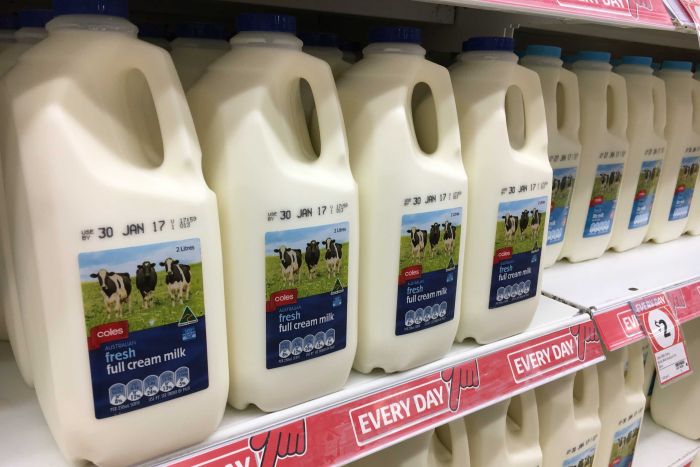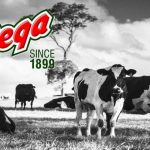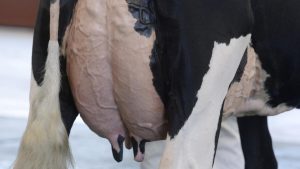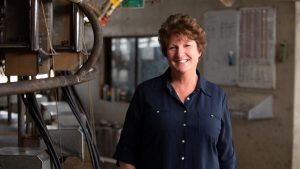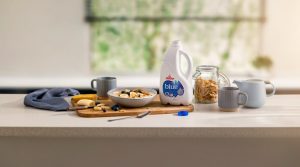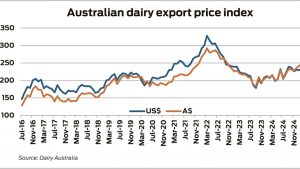
This week major supermarkets Coles and Aldi announced they would lift the price of their home brand milk by 10 cents a litre, a month after Woolworths made the same move.
Key points:
-In 2011, before dollar-a-litre milk was introduced, it was being sold at $1.30 per litre
-Farmers say the 10-cent price rise announced by supermarkets this week is still below that amount
-Economic experts say if inflation was factored in, the price should be close to $1.56 per litre
While southern Queensland dairy farmer Peter Garrett welcomed the increase he also hoped this was just the beginning.
“Milk at $1.10 a litre is still 20 cents below where it was being sold in 2011 [before dollar-a-litre milk was introduced],” he said.
“Let alone inflation [and] what that would have done [to the price of milk] in the past nine years.
“We need to see further structural reform through the industry right from the top down.”
Professor of economics at the University of Queensland John Quiggin said if milk prices kept up with inflation, consumers would have to fork out an extra 46 cents a litre.
“If you maintained the real price of milk with 20 per cent inflation [across nine years] that would be around $1.56 today,” he said.
“Of course there is no economic law that says that all prices should rise at the same rate.
“Historically Australian supermarkets, especially the big chains, have used milk as a loss-leader, an item they can advertise very cheaply in order to get customers through the door.”
Dairy farmers working towards $1.50
CEO of Australian Dairy Farmers David Inall said the industry was working towards getting close to that figure of $1.50 a litre.
“An objective of ours is to see dairy products right through the dairy cabinet rise, whether it’s cheeses, whether it’s yoghurts and of course liquid milk,” he said.
“We know that the 10 cents was always just the start, it was a first step, there is a wider and deeper conversation to be had about the retail value of dairy.”
Mr Inall said that “until dollar milk was gone it was an almost impossible conversation to have”.
“It took one [major supermarket] to go first and in this case it was Woolworths, it went 10 cents out in front of its competitors,” he said.
“I think it would be unlikely for one to go 20, or 30, or 40, or 50 cents out on the first jump, but absolutely it’s an objective to keep this moving forward.”
